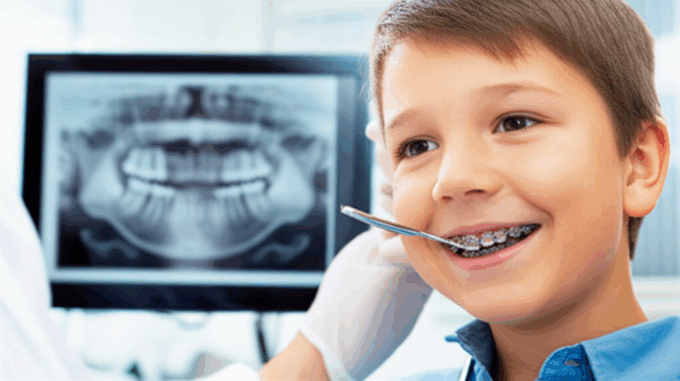Unlocking the Perfect Smile: When is the Best Age for Orthodontic Treatment?

The pursuit of a healthy, confident smile often leads parents and individuals to question the optimal time for dental interventions, specifically orthodontic treatment. While there’s no single magic age that applies to everyone, understanding the developmental milestones of a child’s mouth and jaw provides crucial insights into when to seek professional advice. This article will delve into the recommended ages for initial orthodontic evaluations and the different stages at which treatment might be most beneficial, ultimately empowering you to make informed decisions for your oral health journey.
Early Evaluation: The Foundation of Future Orthodontic Success
The American Association of Orthodontists (AAO) recommends that children have their first orthodontic evaluation by the age of seven. This doesn’t necessarily mean they need braces at this young age, but rather it allows an orthodontist to assess potential issues that might arise as the permanent teeth begin to erupt. At this stage, the orthodontist can identify:
Bite problems: Issues like crossbites, underbites, or overbites can be detected early. While some of these may resolve on their own as the child grows, others can benefit from early intervention.
Crowding: Examining the developing jaw and erupting teeth can reveal if there’s likely to be insufficient space for all the permanent teeth. Early detection can sometimes prevent severe crowding later on.
Habits: Thumb-sucking or tongue-thrusting can significantly impact tooth and jaw development. An orthodontist can provide guidance and strategies to help break these habits before they cause lasting dental issues.
Jaw development: The orthodontist can monitor the growth and alignment of the upper and lower jaws, which is critical for a balanced facial profile and proper bite.
This early check-up is about proactive monitoring and prevention, not necessarily immediate treatment. It gives the orthodontist a baseline and allows them to anticipate future needs, potentially making treatment simpler and more effective down the line.
Phase One: Early Interceptive Orthodontics
For some children, a proactive approach called Phase One orthodontic treatment might be recommended between the ages of six and ten. This phase is designed to address specific problems while the child still has a mix of primary (baby) and permanent teeth. The primary goals of Phase One treatment are to:
Correct severe bite problems: Addressing issues like crossbites or underbites in this early stage can prevent them from becoming more complex and harder to treat later.
Create space for erupting permanent teeth: Appliances like palatal expanders can widen the upper jaw, creating needed room for crowded permanent teeth.
Guide jaw growth: In cases where the jaws are misaligned, early intervention can help guide their development in a more favorable direction.
Simplify future treatment: By correcting certain issues early, Phase One treatment can often reduce the complexity and duration of any subsequent orthodontic treatment needed in adolescence.
It’s important to note that not all children will require Phase One treatment. The decision is based on a thorough evaluation by the orthodontist and is tailored to the individual child’s needs. For many, the early evaluation at age seven might simply lead to a recommendation to continue monitoring.
Phase Two: Adolescent Comprehensive Orthodontics
The most common time for comprehensive orthodontic treatment, often involving braces or clear aligners, is during adolescence. This typically occurs between the ages of 11 and 14, when most of the permanent teeth have erupted. At this stage, the orthodontist can effectively:
Straighten misaligned teeth: Whether teeth are crooked, rotated, or have gaps, this is the ideal time to achieve a perfectly aligned smile.
Correct bite discrepancies: Overbites, underbites, crossbites, and open bites can all be addressed with orthodontic appliances.
Improve facial aesthetics: Properly aligned teeth and jaws contribute to a more balanced and harmonious facial profile.
The adolescent growth spurt can be a significant advantage for orthodontic treatment. Bones are more pliable during this time, making it easier to move teeth and influence jaw growth. This generally leads to more efficient and predictable results. Most teenagers will have their permanent teeth in by this age, allowing the orthodontist to treat all orthodontic issues comprehensively.
Adult Orthodontics: It’s Never Too Late for a Better Smile
While childhood and adolescence are often heralded as the ideal times for dental and orthodontic intervention, it’s crucial to remember that it’s never too late to achieve a straighter smile and improved oral health. Many adults are now seeking orthodontic treatment for a variety of reasons, including:
Cosmetic improvements: Dissatisfaction with the appearance of their teeth.
* Functional enhancement: Improving bite function,


